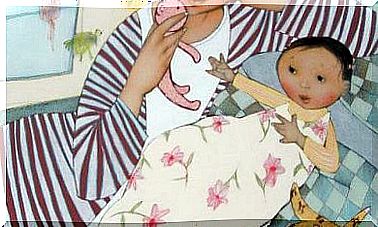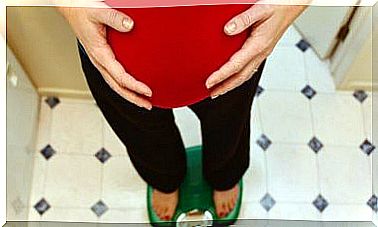How And When Should Your Baby Start With Solid Food
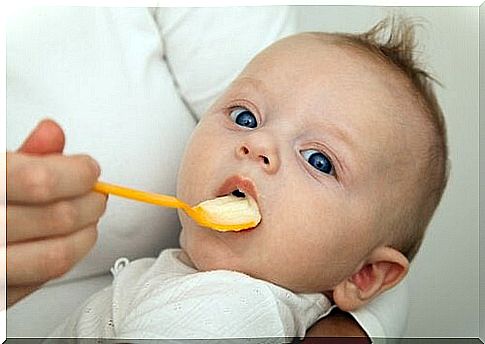
A mother’s breast milk is the most important part of a baby’s diet during the first months of life. Of course, when breast milk is not an option, the baby formula is used.
In general, babies double their birth weight in about 4 months of life – on average approx. 7 kg. By this time, they are already ready to eat their first solid food. Of course, you should always follow your pediatrician’s indications.
Solid food: A whole new world for babies
The first piece of advice you need to start giving your baby solid foods is to take it slowly. Often, when you give your baby her first spoonful of food, she pushes it straight out again. This is normal.
She may not have the ability to move the food to the back of her mouth to swallow it. Remember, she’s never done that before!
Do not forget the fact that your baby has never tried anything thicker than breast milk or formula. So she will probably spend some time getting used to eating solid food.
If you notice that some food is too thick for her, try watering it down in the first few attempts. You can try offering thicker portions later.
Be patient, Rome was not built in a day
Start with just half a spoonful of food. Talk to your baby throughout the process and give positive reinforcement. Say things like “does not look good?”
Keep in mind that your baby may not know what to do first. He may seem confused. He can play with the food in his mouth or even reject it altogether. If that happens, do not be discouraged.
Another way to incorporate new foods into your baby’s diet for the first time is by offering your baby milk at the same time (breast milk or formula). You can switch between half a spoonful of food and half a spoonful of milk.
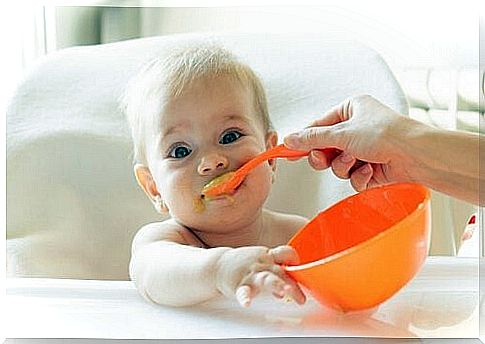
Once your baby has learned to eat his first solid food, then it is a good idea to start introducing additional foods one at a time. This way you will be sure that your baby will get used to trying to eat all kinds of flavors.
Remember that when you introduce some new food, wait 5 to 7 days before introducing another one. This is how you will be able to detect any food allergies or intolerances. And for the same reason, you should not mix new foods together during this stage. Instead, start with one-ingredient meals.
The fact that your baby has started eating solid foods does not mean that it is time to give up breastfeeding or formula feeding. Your baby’s supplemental diet is intended to accompany your baby’s milk intake, not replace it.
You can start with grains
Breakfast cereals are a good source of iron and vitamin B for children. They also help provide the calories that your little one needs. Offering small amounts of simple grains along with breast milk or formula is a great way to introduce your baby to solid foods.
Remember to never put grain in your child’s bottle as it is a danger of suffocation. Moreover, giving grains in your baby’s bottle often without a doctor’s recommendation can cause your baby to gain too much weight.
Move on to vegetables and then fruits
Parents typically start their child’s complementary diet with the introduction of simple grains, which means only one grain at a time.
There is no evidence that solid foods should be introduced in a particular order. But we recommend starting with grains and then moving on to vegetables, and then fruits.
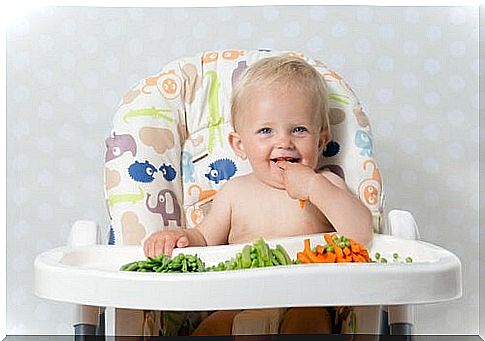
Getting your baby to eat vegetables at an early age is a good idea. We all know that toddlers and older children tend to reject vegetables. However, babies tend to get a taste for vegetables much easier – use it to your advantage!
Start by offering your baby vegetables for lunch. Later, you can offer your baby puree fruit as a morning or afternoon snack.
Each child will be prepared at their own developmental pace
Do not force your child to eat if she cries or turns her head away when offering new foods. If your little one repeatedly refuses to eat, it may be best to go back to the breast or bottle for a little longer.
You can try offering food at a later date. Getting your child to eat is a gradual process. Remember, your baby will still get the nutrients she needs from breast milk and / or formula.
In order for your baby to have a healthy and varied diet in the future, it is important for your baby to get into the habit of eating a wide variety of foods while he is still small. It is also time to teach your child to control his or her appetite.





